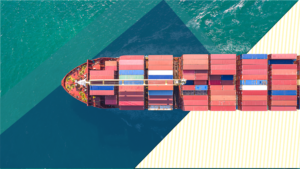In today’s fast-paced digital economy, consumers expect instant, on-demand access to products—anytime, anywhere. With online shopping having overtaken much of traditional brick-and-mortar retail, eCommerce businesses must keep pace with growing customer expectations, especially around speed and convenience.
For many brands, managing fulfillment and logistics in-house is no longer realistic—particularly when next-day shipping has become the norm across the U.S. That’s where third-party logistics (3PL) providers come in. These partners offer the infrastructure and expertise needed to help businesses stay competitive and meet demand efficiently.
But what makes 3PLs such a critical part of modern eCommerce? And how can they help your business scale sustainably while delivering real value? Let’s explore.
What is a 3PL?
A 3PL is a company that businesses hire to manage various aspects of their supply chain operations—especially those related to the movement, storage, and fulfillment of goods. The term “third-party” simply means that the service is outsourced: instead of handling logistics internally, the business entrusts these functions to a specialized external partner. “Logistics” refers to the planning, execution, and optimization of the flow of goods from origin to end customer. In eCommerce and retail, logistics can cover everything from storing products to delivering them to a shopper’s doorstep.
At its core, a 3PL company provides the physical infrastructure, systems, and trained personnel necessary to streamline and scale your business’s back-end operations. A standard suite of 3PL services typically includes:
- Warehousing – Secure storage of inventory in dedicated or shared fulfillment centers.
- Inventory Management – Real-time monitoring and control of stock levels across locations.
- Shipping & Receiving – Coordinating inbound goods from suppliers and outbound shipments to customers.
- Pick & Pack – Selecting items from storage, packaging them accurately, and preparing for shipment.
- Custom Kitting & Packaging – Assembling products or bundles into branded, ready-to-ship configurations.
- Transportation Coordination – Arranging freight via Less-than-Truckload (LTL), Full Truckload (FTL), or parcel carriers.
How 3PLs Support eCommerce Businesses Specifically
While traditional retail and wholesale companies rely on 3PLs for bulk logistics and freight, eCommerce businesses often require more specialized, technology-driven services that align with the speed, visibility, and personalization demands of the digital shopping experience.
Here are a few key eCommerce-specific capabilities a modern 3PL may offer:
1. Advanced Fulfillment Technology
Top-tier 3PLs use warehouse management systems (WMS), order management systems (OMS), and platform integrations (e.g., with Shopify, Amazon, BigCommerce) to automate order flow, maintain inventory accuracy, and provide real-time tracking data.
2. Distributed Warehouse Networks
To enable faster and more cost-effective delivery, many 3PLs offer access to multiple fulfillment centers across the country. This allows brands to strategically place inventory closer to their customers, reducing shipping costs and delivery times.
3. Scalable Inventory and Order Processing
3PLs are equipped to manage fluctuations in demand, such as seasonal surges or viral product spikes. Their infrastructure and trained staff allow them to rapidly scale picking, packing, and shipping operations without sacrificing accuracy or efficiency.
4. Customization and Branding Support
From personalized packaging and inserts to subscription box assembly and kitting, many 3PLs support value-added services that help eCommerce businesses create memorable unboxing experiences.
5. Enhanced Inventory Controls
Some 3PLs offer features like lot tracking, expiration management (important for consumables or cosmetics), and batch-level fulfillment rules—ensuring that inventory is moved efficiently and according to business-specific requirements.
6. Dedicated Support and SLAs
Reliable 3PLs provide account management and performance metrics with service-level agreements (SLAs) in place. This means businesses have clear expectations and can hold their logistics partners accountable for speed and accuracy.
Why This Matters
For most eCommerce brands, especially those in growth mode, trying to manage fulfillment internally becomes unsustainable. Renting warehouse space, hiring staff, purchasing equipment, and building systems from scratch takes enormous time and capital. A 3PL removes these burdens, offering expertise, infrastructure, and scalability out of the box.
By outsourcing logistics to a 3PL, eCommerce companies can:
- Speed up fulfillment times
- Expand geographically without adding warehouses
- Reduce operational overhead
- Focus on marketing, product development, and customer experience
In short, a 3PL isn’t just a service provider—it’s a growth enabler, built to help you scale efficiently while maintaining a high-quality customer experience.
Key Benefits of Partnering with a 3PL
As the eCommerce landscape becomes increasingly competitive, businesses are seeking smarter, more scalable ways to manage fulfillment. 3PL providers offer a solution that not only meets these demands but also positions brands for sustained growth.
1. Faster and More Reliable Order Fulfillment
📦 Speed Meets Customer Expectations
In the age of Amazon Prime, consumers expect lightning-fast delivery—often within 1–2 days. Meeting these expectations in-house can overwhelm even experienced teams.
How 3PLs help: 3PLs operate from strategically located warehouses across the country (and globe), allowing you to distribute inventory closer to end customers. Orders are picked, packed, and shipped with established workflows optimized for speed.
Example: An apparel brand using a single warehouse on the East Coast partners with a 3PL that adds distribution in California and Texas, cutting delivery times from 4–5 days to 2–3 days nationwide.
⏱️ Real-Time Order Processing
3PLs integrate directly with your eCommerce platform, meaning orders are processed in real-time. This eliminates delays between customer checkout and order fulfillment.
Why It’s Vital: Shorter order processing times enhance delivery speed and reduce cancellation risk.
✅ Consistency and Accuracy
Reliable fulfillment isn’t just fast—it’s accurate. Picking the wrong item or shipping late can cost you sales and customer trust.
Why it matters: 3PLs use trained warehouse teams and proven processes, often reinforced with barcode scanning and automated verification systems, to minimize errors. Fulfillment errors erode trust. High accuracy rates reduce costly returns and improve brand reputation—critical in a competitive market.
2. Cost Savings on Shipping and Warehousing
🚚 Discounted Shipping Rates
Shipping costs are one of the biggest drains on eCommerce margins. 3PLs ship thousands of packages daily, giving them access to bulk shipping rates that small or midsize businesses can’t negotiate on their own.
How you benefit: You leverage the 3PL’s volume discounts and zone-skipping strategies, passing savings directly to your bottom line—or your customers via free or reduced shipping rates.
Example: A startup selling eco-friendly beauty products saves 22% on average shipping costs by switching to a 3PL that offers regional fulfillment and negotiated carrier rates.
🏭 Reduced Overhead on Facilities and Labor
Managing your own warehouse comes with fixed costs—rent, utilities, equipment, payroll, and insurance.
Why outsourcing is smarter: With a 3PL, you only pay for the space and services you use. As your order volume fluctuates seasonally, your costs scale accordingly.
Example: A mid-sized apparel company saves over 25% in warehousing costs by switching from a leased facility to a shared 3PL warehouse.
🦾 Reduced Equipment and Tech Investment
You won’t need to buy warehouse equipment, hire fulfillment staff, or implement warehouse management systems (WMS) on your own.
Why It’s Vital: Avoiding large capital expenditures gives you more flexibility to invest in growth-oriented initiatives.
3. Access to Advanced Logistics Technology
🧠 WMS (Warehouse Management System) Integration
Modern 3PLs use robust warehouse management systems (WMS) that provide real-time inventory tracking, batch control, and optimized pick/pack methods.
Why it matters: You gain visibility into inventory across all fulfillment centers, minimizing stockouts and ensuring accuracy in reporting.
Example: A pet supply brand uses a 3PL’s WMS dashboard to monitor product velocity and set reorder points—reducing backorders by 40%.
🔗 Ecommerce Platform and Marketplace Integrations
Top 3PLs offer seamless integrations with platforms like Shopify, Amazon, WooCommerce, Walmart, and more.
What this unlocks: Orders flow directly from your sales channels to the warehouse without manual entry, and tracking updates return automatically to your customers. Seamless integrations eliminate manual data entry, reduce errors, and ensure consistent order flow.
📊 Data and Analytics
3PL systems can generate detailed reports on order trends, inventory velocity, and fulfillment accuracy—helping you make smarter decisions.
Why It’s Vital: Data visibility empowers proactive inventory planning, helping you avoid stockouts or overstocking.
4. Ability to Focus on Core Business
📈 Reclaim Time for Growth
Managing warehousing, packing, and shipping can easily consume your team’s bandwidth—especially during peak seasons.
Founders and small teams often spend hours managing shipments, solving delivery issues, or dealing with inventory hiccups. A 3PL absorbs these tasks, so you don’t have to.
Example: An accessories brand reclaims 15–20 hours a week by outsourcing fulfillment, allowing the founder to focus on influencer marketing and product development.
🪴 Focus on Growth Activities
Instead of being stuck in daily operations, your team can focus on revenue-generating efforts—like launching new SKUs, optimizing customer acquisition, and building partnerships.
Why It’s Vital: Growth doesn’t come from packing boxes—it comes from strategic focus.
⚠️ Reduced Operational Risk
By relying on a fulfillment partner with proven processes, you reduce the risk of delays, compliance issues, and costly shipping errors.
Why It’s Vital: Peace of mind is priceless when your brand’s reputation is on the line.
Operational Advantages That Drive Growth
When an eCommerce business begins to scale, it’s not just more orders that come in—it’s more complexity. From managing inventory across multiple channels to handling seasonal surges and customer returns, the operational demands can quickly overwhelm even the most efficient internal team. 3PL providers exist to solve these challenges, offering operational infrastructure that’s built for scale.
1. Inventory Management Across Multiple Sales Channels
Modern eCommerce rarely lives in just one storefront. Managing inventory across platforms like Shopify, Amazon, Walmart Marketplace, and wholesale channels introduces complexity that 3PLs are built to solve.
Real-Time Inventory Syncing
3PLs use sophisticated warehouse management systems (WMS) that integrate with multiple sales channels, syncing inventory levels in real time. This ensures accurate stock counts are maintained across every platform simultaneously.
Example: A pet supply brand sells on both Shopify and Amazon. With 3PL integration, when one order ships from either channel, inventory is instantly updated across both—eliminating oversells.
Centralized Visibility
3PL dashboards allow businesses to view and manage inventory from all locations and channels in one place. This centralized data makes it easier to plan restocks, forecast demand, and avoid dead stock.
Why It Matters: Without centralized inventory data, businesses risk stockouts on high-performing channels and overstocking slow movers—both of which cut into margins and customer trust.
Multi-Warehouse Fulfillment
With a 3PL, businesses can distribute inventory across multiple fulfillment centers. Orders are then routed to the nearest warehouse, reducing delivery times and shipping costs.
Why It’s Vital: Strategically placed inventory enables regional fulfillment—critical for meeting today’s fast shipping expectations without paying premium carrier fees.
2. Scalability During Seasonal Demand Spikes
For many businesses, growth doesn’t happen in a straight line—it comes in waves. Whether it’s Black Friday, back-to-school, or a viral TikTok moment, 3PLs provide the elasticity your business needs.
On-Demand Labor and Infrastructure
3PLs manage fluctuating order volumes by flexing staff and resources as needed. You’re no longer tied to hiring and training seasonal workers or expanding warehouse space.
Example: A toy brand sees a 4x spike in orders during Q4. Their 3PL handles the surge without missing delivery windows or sacrificing order accuracy.
Dynamic Slotting and Space Utilization
3PLs reconfigure warehouse layouts dynamically to accommodate high-demand SKUs during seasonal peaks, optimizing picking routes and packing workflows.
Why It’s Vital: Efficient space and labor usage means faster order processing and more on-time shipments—without your business having to make operational adjustments.
Business Continuity and Risk Mitigation
Unexpected spikes can cripple internal systems. 3PLs are built with contingency plans and redundancy, ensuring that your operations don’t collapse under pressure.
Why It’s Crucial: Scalability isn’t just about handling growth—it’s about staying reliable when it matters most.
3. Returns Processing and Reverse Logistics
Returns are a natural part of eCommerce, especially in categories like apparel, electronics, and health products. How smoothly they’re handled can make or break customer loyalty.
Streamlined Return Workflows
3PLs offer return management services that include issuing labels, receiving returned goods, and restocking or disposing of inventory according to your business rules.
Example: A fashion brand integrates its return portal with its 3PL. Items are automatically routed to the correct facility, and returned SKUs are re-inventoried within 48 hours.
Inspection and Grading
Many 3PLs provide inspection services to assess whether returned products are resaleable, damaged, or require repackaging.
Why lt Matters: Recovering revenue from returns depends on your ability to quickly inspect, reprocess, and resell products while minimizing losses.
Customer Experience Management
Quick, reliable returns increase the likelihood of repeat business. Partnering with a 3PL ensures your brand delivers a hassle-free return experience.
Why It’s Vital: 92% of consumers say they’ll buy again if the return process is easy. Efficient reverse logistics directly contributes to lifetime value.
4. Automation and Reduced Errors
Manual processes break down at scale. 3PLs bring automation into every stage of fulfillment, driving accuracy and speed.
Automated Order Routing and Labeling
When an order is placed, it’s automatically routed to the optimal warehouse and shipping method based on customer location, inventory levels, and carrier costs.
Example: A supplements brand sees orders auto-routed between West and East Coast warehouses—delivering in 1–2 days with reduced shipping spend.
Barcode Scanning and Inventory Accuracy
From receiving and putaway to picking and shipping, 3PLs use barcode scanning at every stage to ensure real-time inventory accuracy and reduce human error.
Why It’s Vital: Every mis-shipped order not only costs money—it damages your brand. Automation ensures fulfillment accuracy rates above 99%.
Rules-Based Workflows
Set custom automation rules for things like packaging preferences, kitting, or order prioritization. Once established, the 3PL handles the execution without needing manual input.
Why It’s Important: Automation frees up your internal team from daily operations and prevents mistakes that arise from inconsistent handling.
Enhancing the Customer Experience
In the age of Amazon and same-day delivery, customer experience has become the battleground for eCommerce brands. It’s not just about having a great product anymore—it’s about how that product is delivered, tracked, returned, and remembered.
3PL providers play a critical role in shaping that experience. From faster shipping to branded packaging, the right 3PL doesn’t just move boxes—it helps build loyalty and elevate your brand in the eyes of the customer.
1. Faster Shipping = Improved Satisfaction and Loyalty
Speed is no longer a “nice-to-have.” It’s expected. Today’s consumers have grown accustomed to 1- to 2-day delivery, and anything longer can risk cart abandonment.
Meeting Modern Delivery Expectations
Consumers often compare shipping speed to major marketplaces, even when shopping with small, independent brands.
How 3PLs Help: With multiple fulfillment centers and advanced order routing, 3PLs can ship from the location closest to the customer—cutting delivery times dramatically without added costs.
Example: A pet accessory brand using a single warehouse upgraded to a 3PL with a bicoastal network. Their average shipping time dropped from 4.2 to 1.8 days, reducing negative reviews and increasing repeat purchases.
Speed Builds Trust
When customers get their orders quickly—and on time—it reinforces trust in the brand, which is key for repeat business.
Why It’s Vital: Happy customers are more likely to return, recommend your brand, and leave positive reviews. Fast shipping turns first-time buyers into long-term loyalists.In the age of Amazon and same-day delivery, customer experience has become the battleground for eCommerce brands. It’s not just about having a great product anymore—it’s about how that product is delivered, tracked, returned, and remembered.
3PL providers play a critical role in shaping that experience. From faster shipping to branded packaging, the right 3PL doesn’t just move boxes—it helps build loyalty and elevate your brand in the eyes of the customer.
2. Real-Time Tracking and Delivery Transparency
Nothing makes customers more anxious than not knowing where their order is. Providing clear, accurate tracking isn’t just a feature—it’s part of the experience.
Live Order Updates
Consumers want to know when their order was packed, shipped, out for delivery, and delivered.
How 3PLs Help: Top-tier 3PLs integrate with your sales channels to automatically sync order status updates. Some offer branded tracking pages and email notifications at every step.
Example: A wellness supplement brand partnered with a 3PL offering real-time tracking integration with Shopify. Customer support tickets related to “Where’s my order?” dropped by 35%.
Delivery Accuracy
Transparent tracking helps catch delivery issues early and increases accountability across the last mile.
Why It’s Vital: Delivery errors or lost packages can cost sales and damage brand reputation. A 3PL’s integrated tracking reduces guesswork and improves customer peace of mind.
3. Branded Packaging and Unboxing Experience
In eCommerce, the moment your customer opens the package is one of the few physical touchpoints you control. It’s your chance to make a lasting impression.
Custom Packaging and Inserts
Branded boxes, thank-you cards, product samples, and marketing inserts turn a routine delivery into a memorable experience.
How 3PLs Help: Many 3PLs offer kitting and custom packaging services, handling everything from branded tissue paper to subscription box curation.
Example: A boutique fashion brand used its 3PL to include handwritten thank-you notes and seasonal lookbooks in every package. Their customer referral rate increased by 18%.
Reinforcing Brand Identity
Packaging is a marketing tool. It reinforces your brand values, aesthetics, and premium positioning.
Why It’s Vital: A thoughtful unboxing moment increases the perceived value of your product—and encourages customers to share their experience on social media, driving organic growth.
4. Simplified Returns and Support
Returns are an unavoidable part of online retail, but when handled well, they can actually strengthen the customer relationship.
Streamlined Return Workflows
Clear return policies, prepaid labels, and fast refunds all reduce friction and increase customer satisfaction.
How 3PLs Help: 3PLs often manage reverse logistics—receiving returned items, inspecting them, restocking where applicable, and integrating with your platform to automate refunds.
Example: A tech accessories company implemented their 3PL’s return portal. Customer satisfaction scores related to returns jumped from 68% to 91%.
Customer Support Integration
Seamless coordination between the 3PL and your support team ensures issues are resolved quickly, especially during high-volume seasons.
Why It’s Vital: Fast, reliable returns lead to more confident purchasing. A customer-friendly return experience can be the deciding factor in whether someone buys from you again.
Expanding into New Markets
As an eCommerce brand grows, the opportunity to reach new customers in untapped markets becomes a major driver of revenue. But with geographic expansion comes complexity—especially when it comes to fulfillment, shipping regulations, and customer expectations around delivery speed. That’s where 3PL providers step in. With established infrastructure, global expertise, and strategic distribution capabilities, 3PLs make expanding into new regions not only possible, but sustainable.
1. How 3PLs Support International Shipping and Customs
Expanding into international markets presents immense opportunity—but also significant logistical and regulatory challenges. 3PLs help navigate this complexity through expertise, infrastructure, and compliance systems.
Navigating Customs Regulations
Every country has its own rules regarding duties, taxes, prohibited goods, labeling, and documentation. Mistakes in paperwork or product classification can lead to delays, fines, or shipment rejections.
How 3PLs Help: Established 3PLs have customs brokerage partnerships or in-house teams to ensure shipments comply with destination country laws. They automate commercial invoice creation, HS code assignment, and tax calculation to streamline the process.
Example: An organic skincare brand expanding to Canada works with a 3PL that handles customs documentation and ensures that products meet Canadian labeling regulations—eliminating delays at the border.
International Carrier Relationships
Shipping across borders requires coordination with international carriers and understanding of local delivery services, import processes, and transit time variability.
Why It’s Vital: Poor international shipping options lead to high cart abandonment. A 3PL gives access to negotiated global rates and faster, more reliable international delivery options through proven carrier networks.
Duties & Taxes Management (DDP vs DDU)
3PLs help sellers decide whether to ship Duties Paid (DDP)—where taxes are paid up front—or Duties Unpaid (DDU)—where the buyer is responsible. Choosing the right method protects the customer experience and ensures price transparency.
Why It’s Vital: Unexpected customs fees or delays can turn first-time international buyers into one-time customers. A 3PL helps you make informed choices and communicates clearly to buyers at checkout.
2. Leveraging a Distributed Warehouse Network for Regional Shipping
One of the most effective ways to reduce shipping costs and delivery times in new markets is by placing inventory closer to customers. This is where the 3PL’s network of fulfillment centers becomes a game-changer.
Strategic Inventory Placement
Rather than shipping all orders from a single warehouse, 3PLs allow brands to split inventory across multiple geographic regions based on demand patterns.
Example: A home goods brand expands from the U.S. East Coast to the West. With a 3PL, they store stock in California and New Jersey, cutting delivery times from 5 days to 2 days nationwide.
Why It’s Vital: Customers in new regions often expect delivery times comparable to what they’re used to from major retailers. Strategic inventory placement closes that expectation gap.
Lower Shipping Costs
Distributed fulfillment allows businesses to use ground shipping instead of air for more orders—saving significantly on logistics expenses.
How 3PLs Help: Their systems automatically route orders to the nearest warehouse with available stock, optimizing for both cost and speed.
Redundancy and Flexibility
With inventory in multiple locations, businesses are less vulnerable to local disruptions like weather events, labor shortages, or facility closures.
Why It’s Vital: Business continuity is essential when entering competitive markets. Distributed operations make it easier to scale without sacrificing reliability.
3. Reducing Delivery Times in New Geographies
Fast shipping isn’t just a luxury anymore—it’s a customer expectation. A 3PL helps eCommerce brands meet or exceed this expectation, even in unfamiliar territories.
Regional Fulfillment Centers
With fulfillment hubs strategically located across the country—or globe—a 3PL can deliver products in 1–2 days to nearly any new market, often without relying on expensive express shipping.
Example: An athletic apparel brand launches in the UK. Their 3PL partner fulfills orders from a warehouse outside London, enabling next-day delivery throughout the region.
Why It’s Vital: Localized fulfillment enhances the customer experience and gives smaller brands the ability to compete with Amazon-like speed.
Delivery Speed = Conversion Boost
Faster delivery improves conversion rates and reduces cart abandonment, especially among new customers unfamiliar with your brand.
How 3PLs Help: With distributed stock and optimized carrier partnerships, 3PLs cut transit times—helping brands offer competitive shipping promises on their site and at checkout.
Real-Time Tracking and Customer Transparency
3PLs offer systems that provide tracking and delivery updates across carriers and countries, ensuring customers stay informed.
Why It’s Vital: When customers receive real-time updates, it builds trust—even in new markets. It also reduces customer service inquiries about order status.
The Role of 3PLs in Meeting E-Commerce Demand
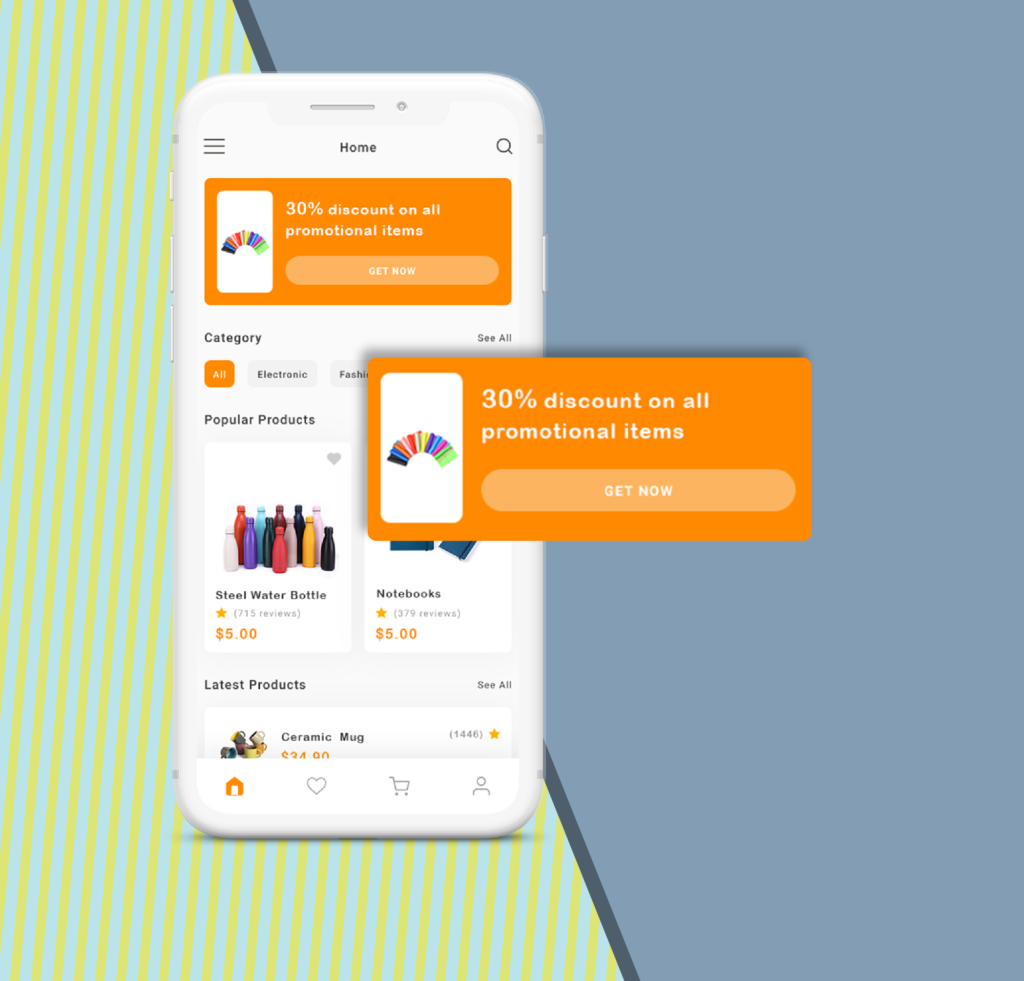
As digital commerce evolves, so do consumer expectations around speed, transparency, and convenience. The pandemic significantly accelerated this shift: in 2020 alone, global e-commerce sales surged by 27.6%, adding an extra $4.28 trillion in revenue, largely driven by shifts in consumer behavior due to COVID-19. Even post-pandemic, growth remains strong, with e-commerce projected to account for 23% of all retail sales worldwide by 2025.
With this explosive growth comes increased pressure for eCommerce businesses to deliver seamless, fast, and reliable order experiences. That’s where 3PL providers prove essential—not only as operational partners but as key drivers of customer satisfaction and brand trust.
Why a 3PL Is Critical for eCommerce Success
In an industry where 69% of shoppers abandon a brand after one poor delivery experience, first impressions matter more than ever. A streamlined order fulfillment experience builds consumer confidence—and the technology, infrastructure, and expertise of a 3PL are often what make that possible.
How a 3PL Fulfills eCommerce Orders
For online retailers, the logistics chain is fully digital—from shopping cart to customer doorstep. A single error in inventory, shipping, or delivery can result in lost trust and revenue. Partnering with a 3PL enhances every step of the order process:
- Order is placed online → Automatically pushed to the 3PL’s system.
- Warehouse team picks and packs the order → Using digital picking lists generated by the Warehouse Management System (WMS).
- Shipping label is created → Carrier collects and delivers the package.
- Tracking data is synced → The customer receives real-time delivery updates.
This process reduces handling errors, speeds up delivery, and increases visibility for both the brand and the customer.
E-commerce Warehousing
As businesses scale, so does the need for organized, scalable storage. A 3PL provides:
- Dedicated and shared warehousing space tailored to SKU volume and seasonality.
- Real-time inventory visibility so you know exactly what’s in stock.
- Scalable infrastructure to accommodate growth without requiring capital investment in facilities.
📦 Stat: Companies that outsource warehousing to a 3PL report a 15–30% reduction in logistics costs.
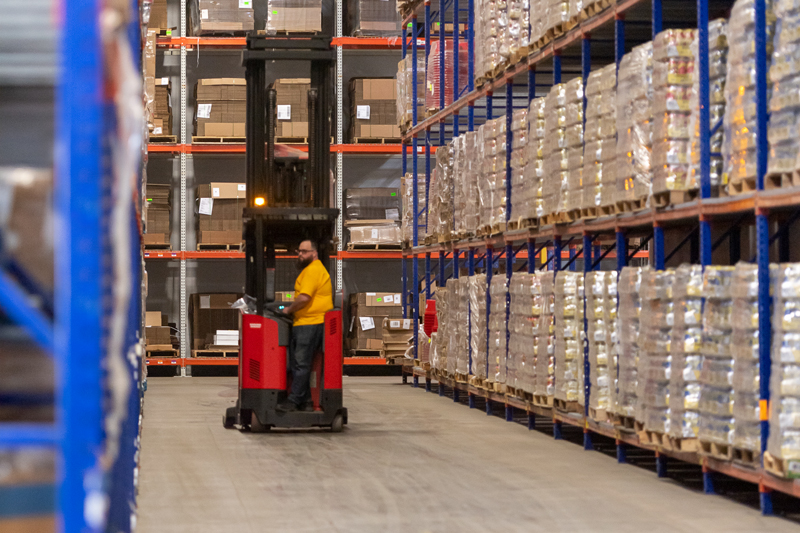
E-commerce Order Fulfillment
Order fulfillment is where a brand makes or breaks the post-purchase experience. With a 3PL:
- Orders are processed and shipped faster, often same-day or next-day.
- Labor and operational tasks are handled by experienced logistics staff.
- Fulfillment accuracy improves with barcode scanning, automation, and quality control.
✅ Example: A beauty brand using a 3PL saw a 40% improvement in fulfillment accuracy and a 25% reduction in customer complaints.
How 3PLs Handle Order Fulfillment: A Step-by-Step Breakdown
One of the most valuable aspects of partnering with a 3PL is the seamless flow of data between your e-commerce platform and the logistics provider. This integration ensures that orders move from the online store to the warehouse floor automatically, quickly, and with minimal manual effort.
Here’s a detailed look at what happens after a customer clicks “buy”:
1. Order Sync and Transmission
Once a customer places an order on your e-commerce site (e.g., Shopify, WooCommerce, BigCommerce, etc.), the order data is automatically pushed to the 3PL’s system via an API or platform integration. This includes:
- Product SKUs and quantities
- Customer shipping information
- Order value and shipping method
- Special instructions or gift messages (if applicable)
Why it matters: This real-time transmission eliminates the need for manual order entry, reducing errors and delays while enabling near-instant processing.
2. Order Picking
As soon as the 3PL receives the order, their Warehouse Management System (WMS) generates a digital picking list. This list is sent to a warehouse associate, who uses a handheld scanner or mobile device to locate each item from the inventory.
- Items are picked from storage bins or shelves using SKU-based identifiers.
- Barcode scanning ensures accuracy and confirms the correct items are selected.
- If an item is out of stock, the system can trigger an alert for restocking or backorder fulfillment.
Example: In a high-volume 3PL, pickers follow optimized picking routes—such as batch or zone picking—to reduce travel time and increase efficiency.
3. Order Packing
Once all items have been picked, the order is sent to a packing station. Here, the items are:
- Inspected for quality and accuracy
- Packed securely using custom or brand-provided packaging
- Accompanied by packing slips, receipts, or promotional inserts (as specified)
Many 3PLs also offer custom kitting services, which may include assembling multi-item bundles, adding gift-wrapping, or applying branded stickers and inserts.
Why it matters: Proper packing ensures a damage-free, on-brand unboxing experience, which plays a key role in customer satisfaction and retention.
4. Shipping and Labeling
Once packed, the order is weighed and measured. The system then selects the most cost-effective shipping method based on:
- Chosen shipping speed (standard, express, 2-day, etc.)
- Destination zone
- Carrier rates and service reliability
The 3PL prints and applies the shipping label and hands the package off to the appropriate carrier—such as UPS, FedEx, USPS, or regional couriers.
Pro tip: Some 3PLs offer rate shopping capabilities to choose the best shipping rate from multiple carriers automatically.
5. Tracking and Confirmation
After the order has been shipped, the 3PL’s software updates the order status in your e-commerce platform with:
- Carrier tracking number
- Shipping confirmation details
- Estimated delivery date
Your customer receives an automated notification with their tracking number, enabling real-time shipment visibility and reducing “Where is my order?” support inquiries.
Why it matters: Transparent tracking builds trust, improves post-purchase engagement, and enhances the overall customer experience.
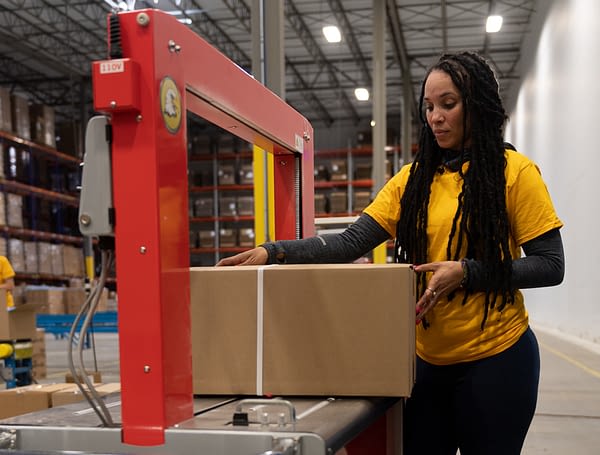
E-commerce Inventory Management
Inventory mismanagement leads to stockouts, overselling, and disappointed customers. A 3PL’s Warehouse Management System (WMS) helps:
- Track inventory in real time across multiple sales channels.
- Automate reorder points and reduce stock discrepancies.
- Provide detailed reporting to forecast demand and plan promotions.
📊 Stat: Businesses using advanced inventory management systems are 35% more likely to reduce backorders and improve customer satisfaction (Deloitte).
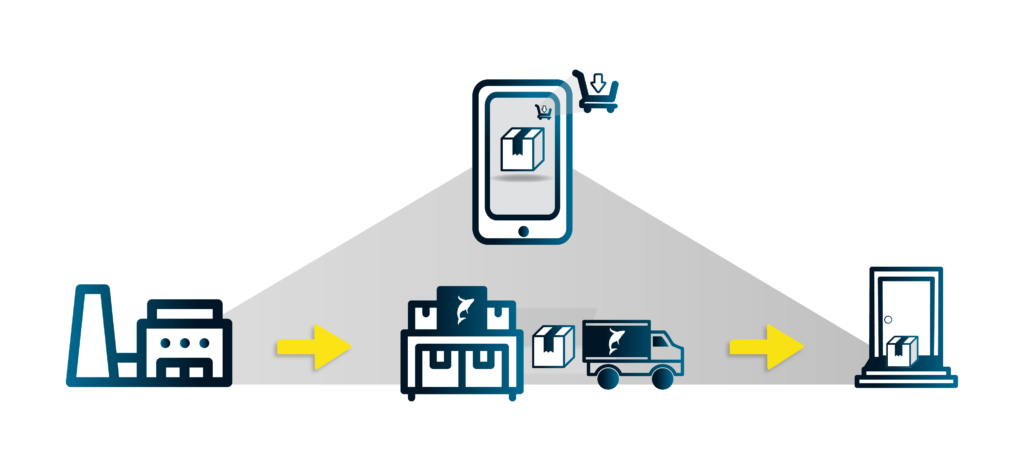
Key Factors in choosing a 3PL for E-commerce
When considering the right 3PL for your business, there are several factors to consider. You should evaluate a 3PL company to make sure it has the right capabilities to meet your growing business needs.
Experience and Competencies
Working with an experienced and established 3PL is important to ensure that the fulfillment and logistics needs will be taken care of without issues. If your business operates in some part through e-commerce activities, the 3PL you select will need to be capable of processing e-commerce orders and returns in a timely manner.
Scalability and Flexibility
Making sure your 3PL provider has the ability to scale with your business needs is important–as your order volume grows, the 3PL will need additional staffing to guarantee delivery promises. An e-commerce business must make sure that the 3PL partner they choose is equipped to service them for the long haul.
Pricing and Fees
Naturally, pricing is often the largest factor. Taking services into consideration when comparing fees is important, as not all 3PLs provide the same level of service and extras that could make the difference for your end user.
Working with Nautical
Nautical is a centrally-located 3PL provider in the United States. We specialize in helping e-commerce businesses streamline their fulfillment operations. Our newly-upgraded warehouses, experienced team, and advanced technology enable us to handle everything from inventory management to shipping and returns.
By partnering with us, you can focus on growing your business while we take care of the logistics. Our flexible solutions can be tailored to your specific needs, ensuring that your orders are delivered on time and your customers are satisfied.
Frequently Asked Questions (FAQ) About 3PLs and eCommerce
What exactly is a 3PL, and how does it work with my eCommerce business?
A 3PL (Third-Party Logistics) provider is a company that manages logistics services for businesses on an outsourced basis. For eCommerce businesses, a 3PL handles key aspects such as warehousing, inventory management, order fulfillment, shipping, and returns processing. When an order is placed on your website, it is sent to the 3PL, where the items are picked, packed, and shipped directly to the customer. The 3PL uses specialized technology, such as Warehouse Management Systems (WMS) and real-time tracking software, to streamline the process and improve operational efficiency.
What exactly is a 3PL, and how does it work with my eCommerce business?
A 3PL can help reduce shipping costs in several ways:
- Bulk Shipping Rates: 3PLs often ship for multiple companies, which allows them to negotiate lower rates with carriers due to volume discounts.
- Regional Warehousing: With a distributed warehouse network, 3PLs can store inventory closer to customers, reducing shipping distance and costs, particularly for 2-day shipping or same-day delivery services.
- Rate Shopping: Many 3PLs have software that automatically selects the most cost-effective shipping option based on the delivery address, weight, and urgency of the order.
Statistic: Businesses that use 3PLs report a 15-30% reduction in logistics costs
Can a 3PL help me expand my eCommerce business into international markets?
Yes, 3PLs are critical for businesses looking to expand globally. Many 3PLs have international shipping capabilities, including the expertise to handle customs clearance, import/export regulations, and international returns. With a 3PL, you can store inventory in various international warehouses, allowing you to offer faster shipping options to global customers and scale your business without needing to establish your own overseas infrastructure.
Statistic: In 2020, global cross-border eCommerce sales reached $4.2 trillion and are expected to grow by 20% annually.
How does a 3PL improve my inventory management?
Effective inventory management is one of the primary services provided by 3PLs. Through their Warehouse Management System (WMS), 3PLs can track your stock levels in real-time, providing you with updates on:
- Inventory levels to prevent overstocking or stockouts
- Product location within the warehouse, allowing for faster picking and packing
- Automated reorder points to help you maintain optimal stock levels
By using a 3PL, you also gain real-time insights and analytics to make better purchasing and stocking decisions, helping you reduce excess inventory and increase cash flow.
How does partnering with a 3PL improve the customer experience?
Customer experience is greatly enhanced by the services a 3PL provides, particularly in:
- Faster Shipping: With access to regional warehouses and advanced logistics technology, 3PLs can ship orders faster, often within same-day or next-day shipping.
- Real-Time Tracking: Customers can track their orders in real time, reducing anxiety and improving post-purchase satisfaction.
- Branded Packaging and Unboxing: Many 3PLs offer custom packing options, which means you can deliver a unique, on-brand unboxing experience to delight customers.
- Efficient Returns Processing: A 3PL can handle returns quickly and efficiently, helping your customers return items without hassle and improving their overall satisfaction.
Statistic: 69% of customers abandon a brand after just one poor delivery experience.
Is it difficult to switch from in-house logistics to a 3PL?
While transitioning to a 3PL can require some upfront work, most providers offer onboarding support to help businesses integrate their systems. A smooth transition usually involves:
- Software Integration: Syncing your eCommerce platform with the 3PL’s WMS to ensure automatic order transmission.
- Data Migration: Transferring inventory data and historical sales information to the 3PL’s system.
- Training and Setup: 3PLs typically provide training for your team to help them get familiar with the new processes.
In most cases, the time and effort spent on setup are outweighed by the long-term benefits of a streamlined and more efficient logistics process.
What is the cost of working with a 3PL?
The cost of working with a 3PL can vary widely based on factors like:
- Order volume: Larger order volumes typically result in lower per-unit fulfillment costs.
- Service level: More complex services, such as custom packaging or expedited shipping, will come at an additional cost.
- Storage needs: Warehouse space and inventory storage fees are based on the volume of inventory you have in the warehouse.
Most 3PLs offer custom pricing models, which means you can choose a solution that fits your budget and business needs.
Pro tip: 3PLs often offer flexible contracts, so businesses can scale their logistics as needed without being locked into long-term agreements.
How can a 3PL help me during peak seasons or sales events?
3PLs are designed to handle fluctuations in demand. During peak seasons such as Black Friday, Cyber Monday, or holiday sales, a 3PL can:
- Scale operations quickly by using additional labor, warehouse space, and advanced technology.
- Automate fulfillment to prevent backlogs, ensuring that orders are processed and shipped on time.
- Manage inventory during high-demand periods by offering just-in-time fulfillment or seasonal storage solutions.
Statistic: 61% of eCommerce businesses experience higher demand during seasonal sales, which is one reason why 3PLs are essential for holiday prep.
